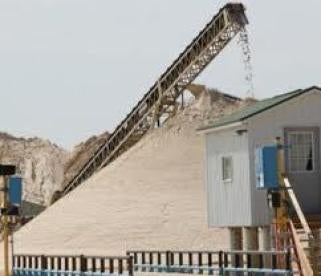On November 22, 2011, 10 citizens petitioned the Wisconsin Department of Natural Resources (“WDNR”) to adopt rules to govern emissions of silica as a hazardous air pollutant.
Triggered by the recent increase in frac sand mining activity in Wisconsin, the petition makes three requests:
-
Include Respirable Crystalline Silica (“RSC”) as a hazardous air pollutant in NR 445 – WDNR’s air toxics rule;
-
Establish an emission standard of “3 micrograms per cubic meter with a time period of annual” – based on the California Office of Environmental Health Hazard Assessment Reference Exposure Level; and
-
Require monitoring sufficient to demonstrate compliance with the standard.
The Petition represents a next step in the debate about if and how to regulate airborne silica that began in 2000 when WDNR revised NR 445. That rule directed WDNR to conduct a study of amorphous and crystalline silica, to “evaluate the sources and amounts of emissions and alternative strategies for minimizing public health risks” and to report progress to the WDNR citizen advisory board by July 1, 2006.
WDNR released a draft Silica Study in December 2010, and issued the final Silica Study in August 2011. In the Executive Summary of the final Silica Study, WDNR stated (p. 2):
“A recurring theme from the literature review and survey is that very little conclusive information exists regarding sources, controls or levels of silica present in ambient air. This lack of data means it is not currently possible to determine conclusively whether or to what extent the quantity, duration or types of silica emissions in the state may be a public health concern. It would take significant additional efforts to fill in these data gaps. That said, Wisconsin has regulated PM for 40 years. The controls for PM are the same controls for crystalline silica. This means that for those crystalline silica sources where PM is controlled, crystalline silica emissions are also reduced.”
While the petition is framed to address “bedrock sandstone mines and associated processing plants”, the requested rules could apply to any source of airborne silica, including other non-metallic mining and rock crushing operations, foundries, glass manufacturing, abrasive blasting, farming, masonry and concrete removal.
Where, as here, there is no federal hazardous air pollutant standard, Wis. Stat. s. 285.27(2)(b) requires that DNR make certain written findings in order to adopt a state emission standard for a hazardous air pollutant. Enacted in 2003 (2003 Wisconsin Act 118) this procedure has little precedent. In addition, recent revisions to agency rulemaking procedures enacted as part of 2010 Wisconsin Act 21 add time and procedural steps to the rulemaking process. As a result, if DNR determines to proceed with rulemaking as Petitioners request, the process could take several years.
DNR staff are reviewing the petition and next steps are currently undetermined. Stay tuned for future Alerts as more information becomes available.





 i
i


